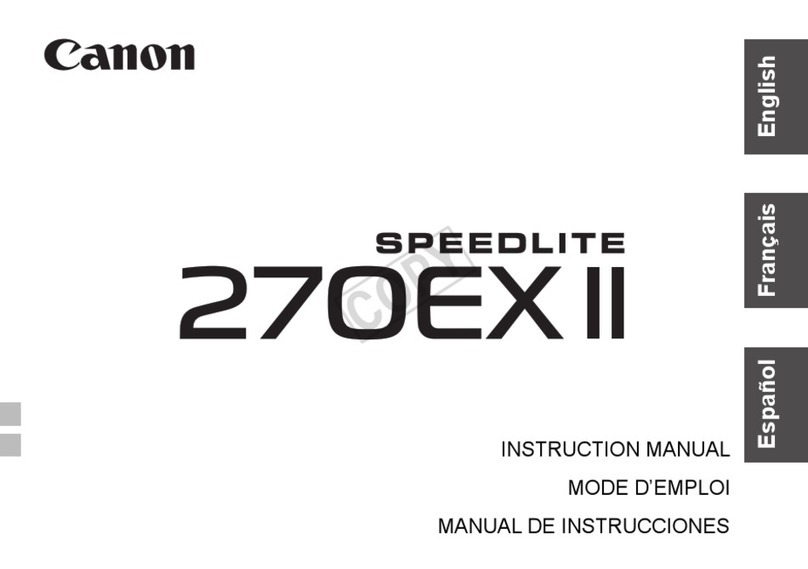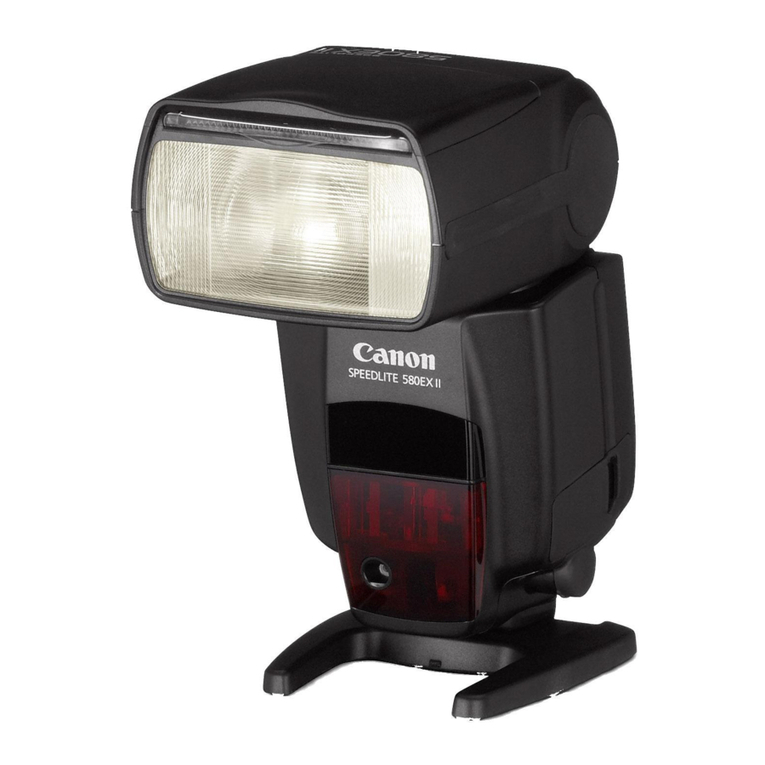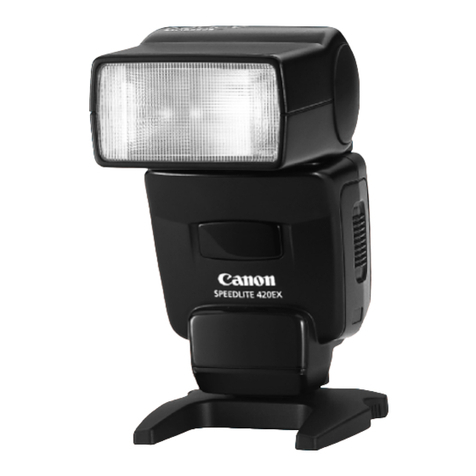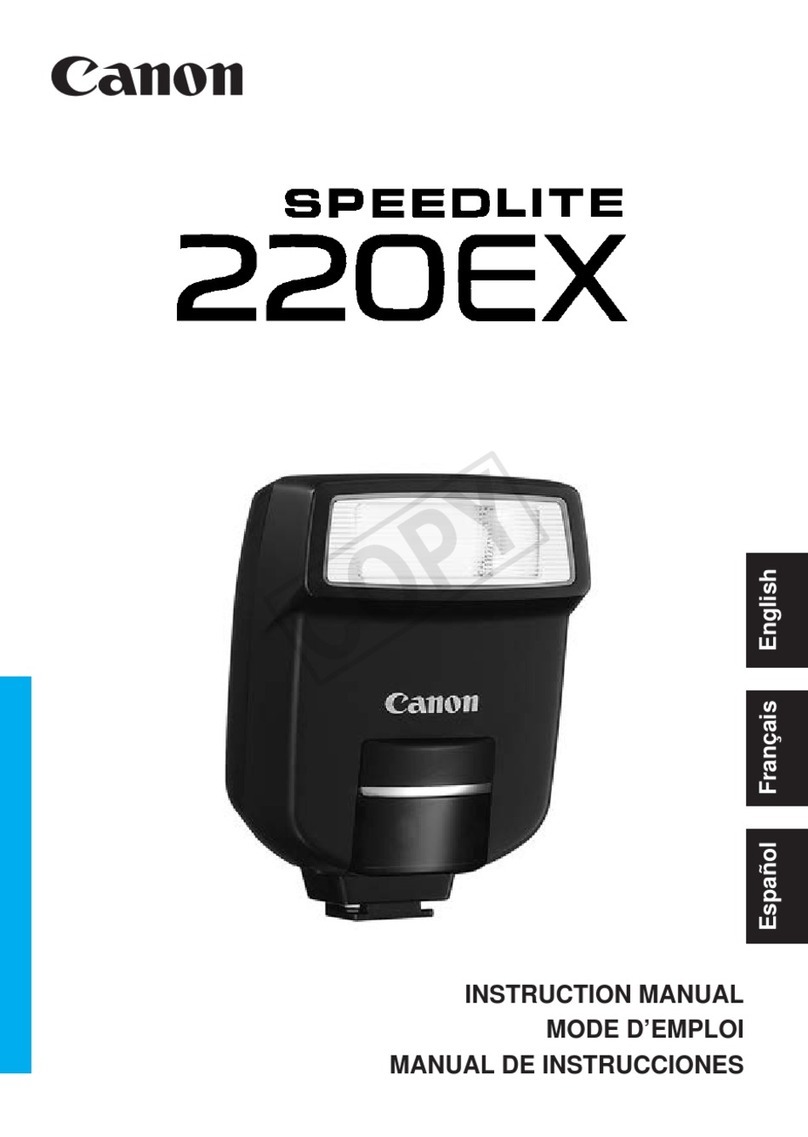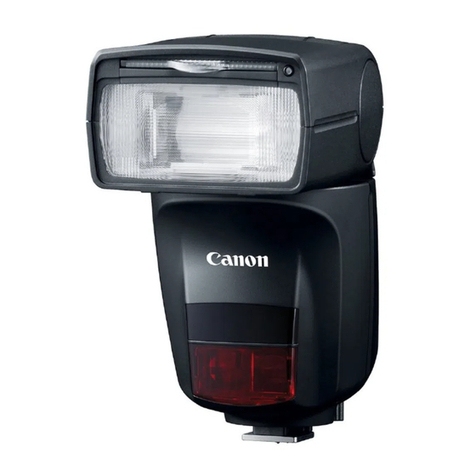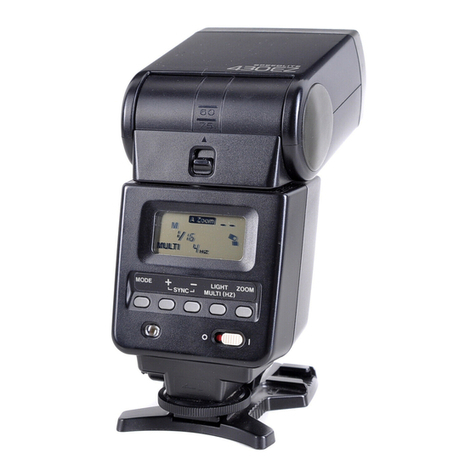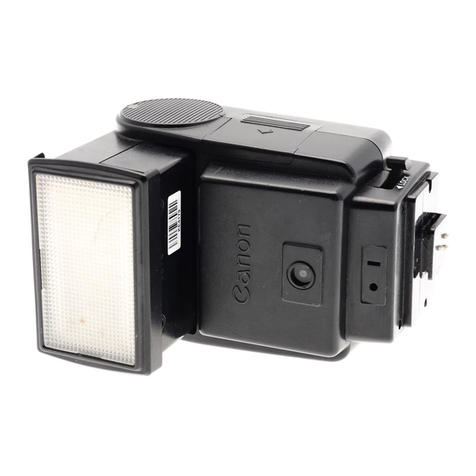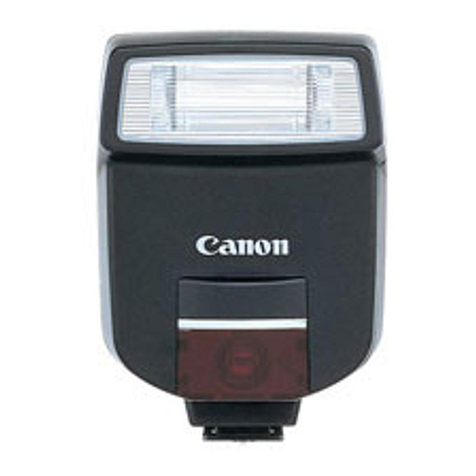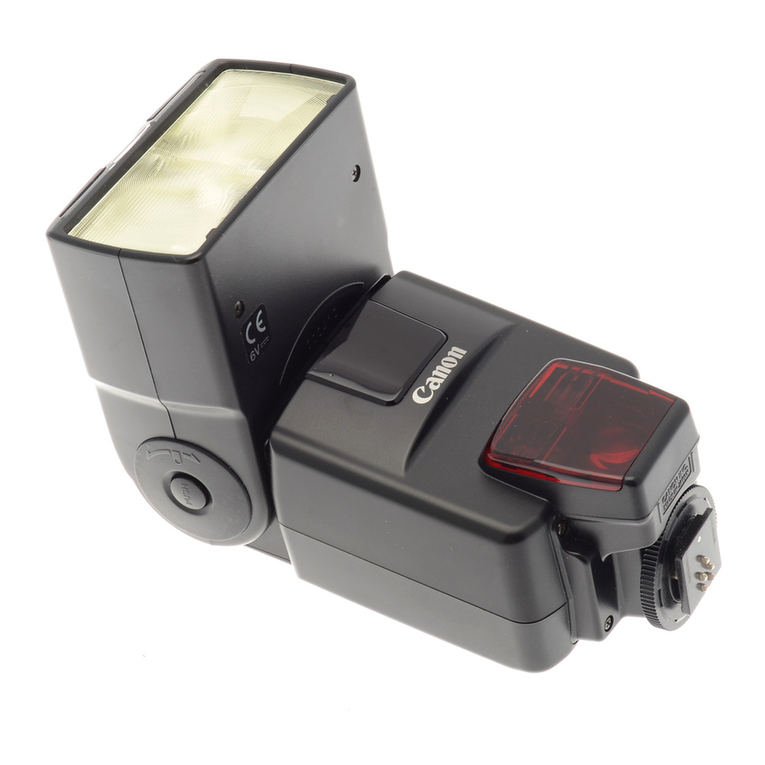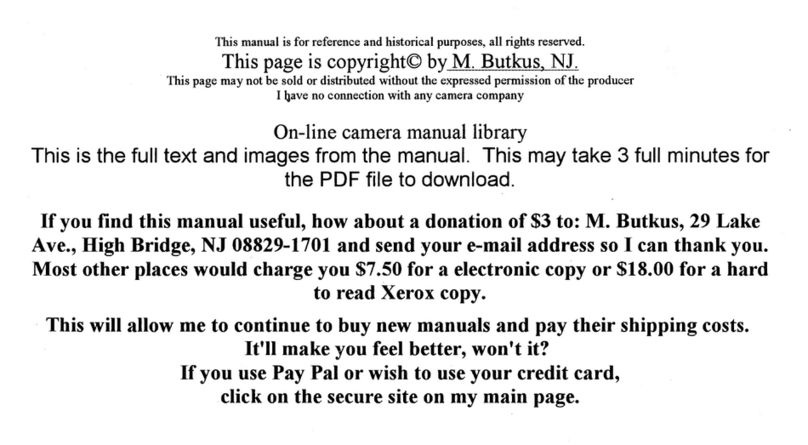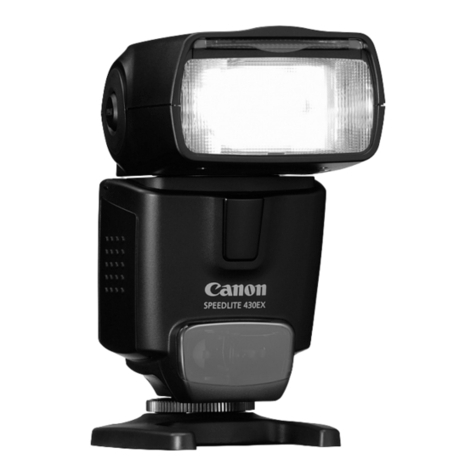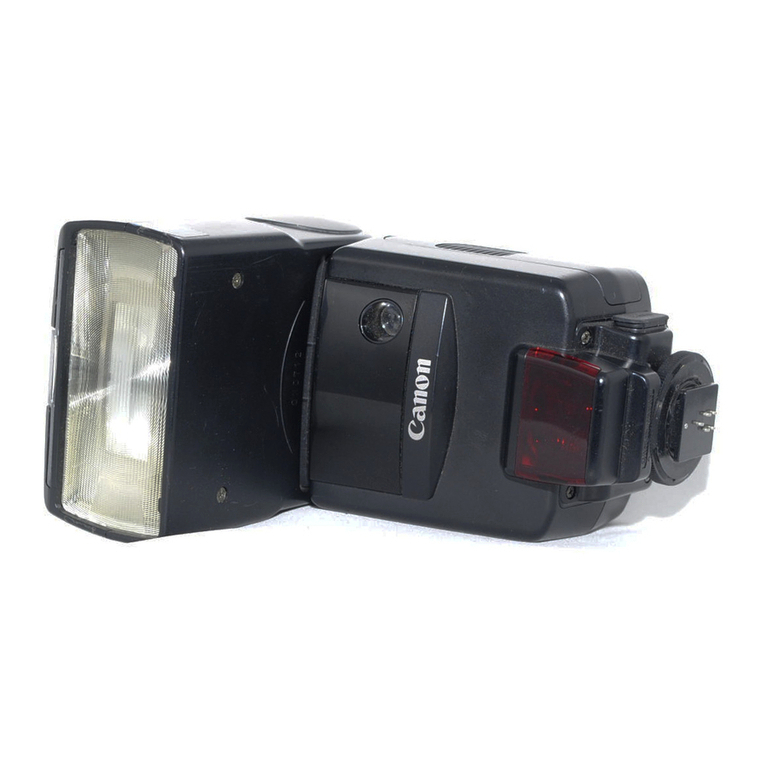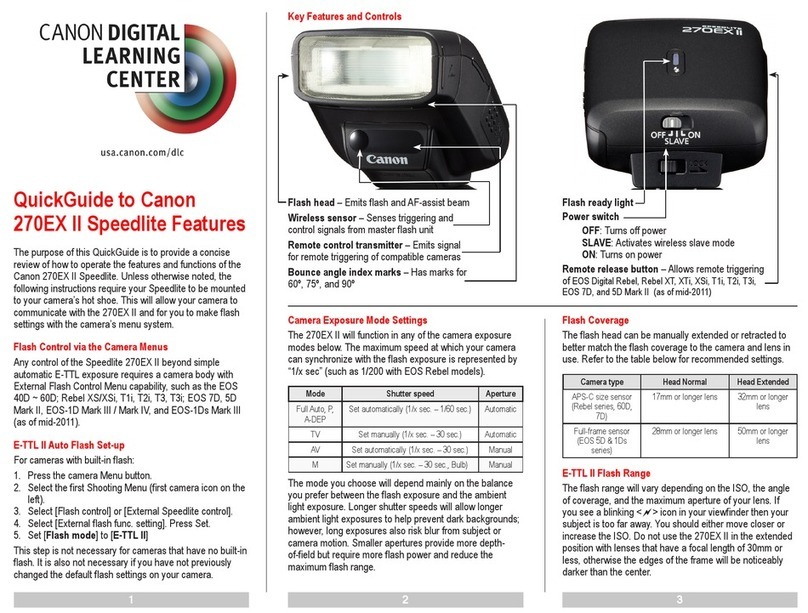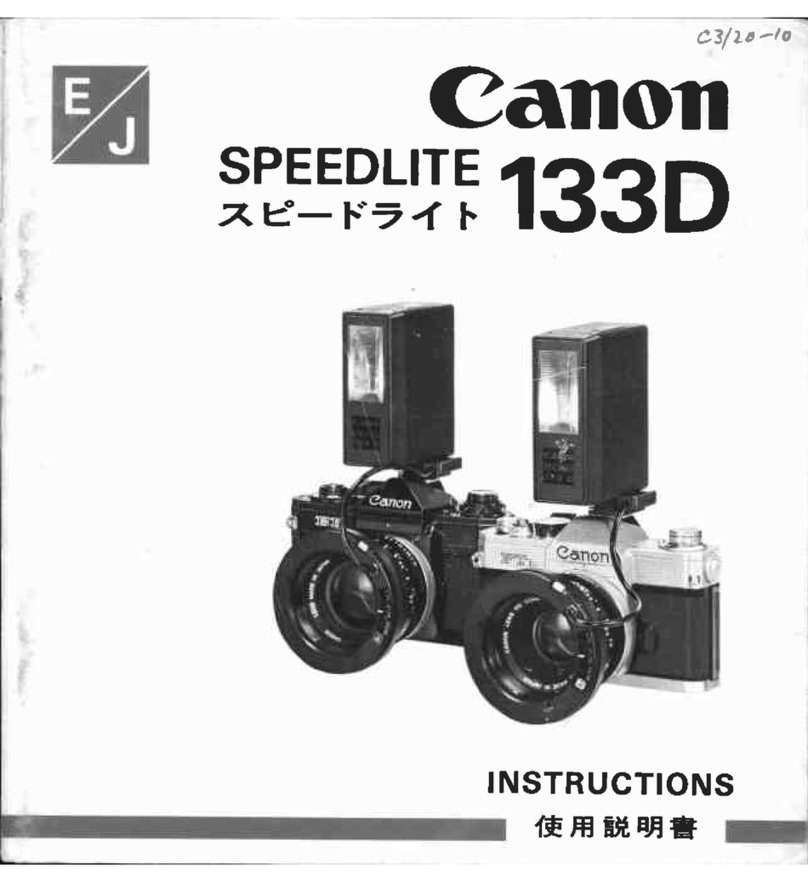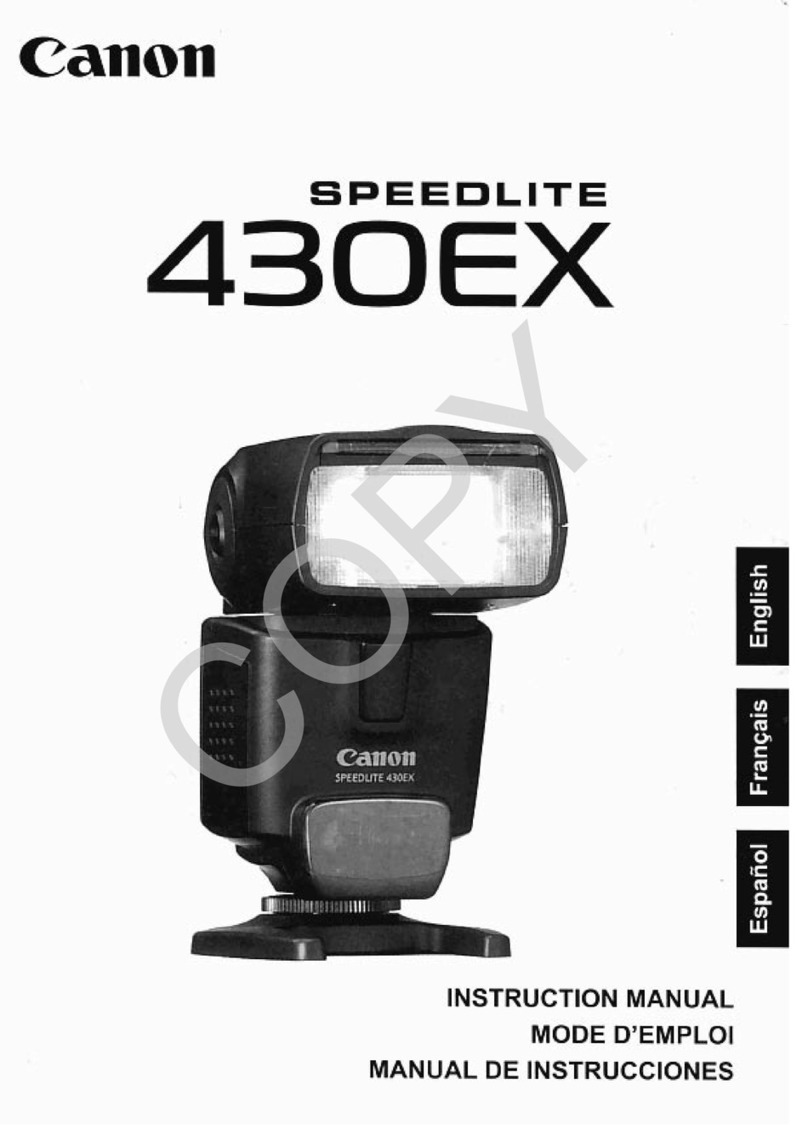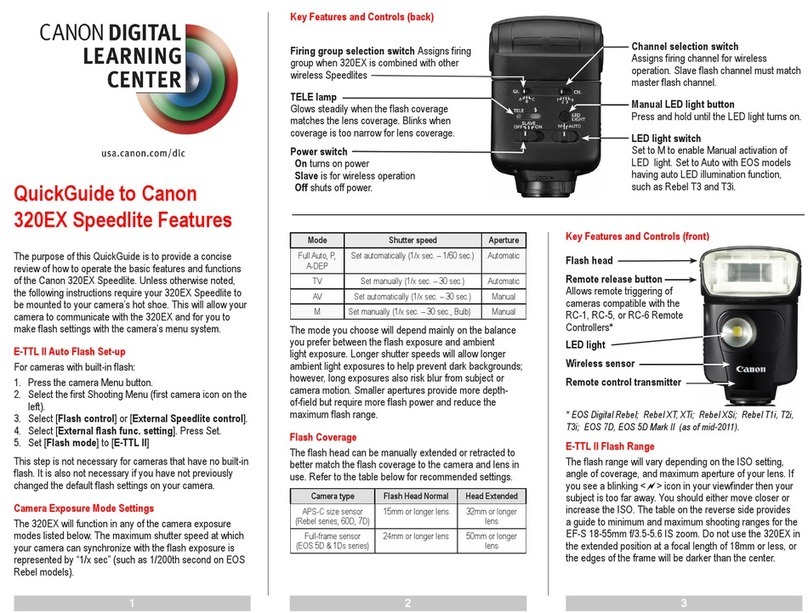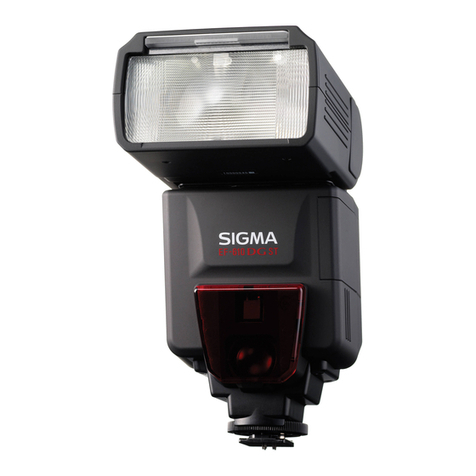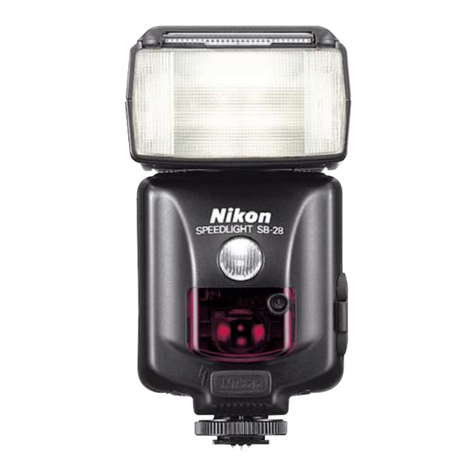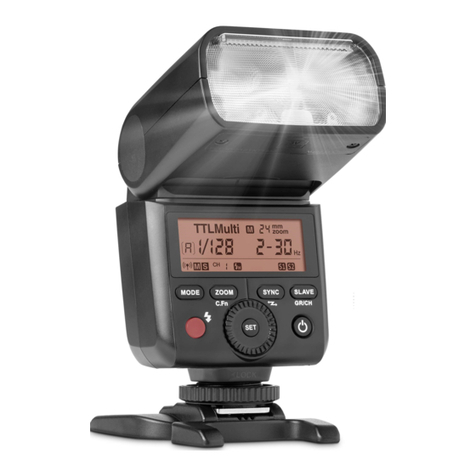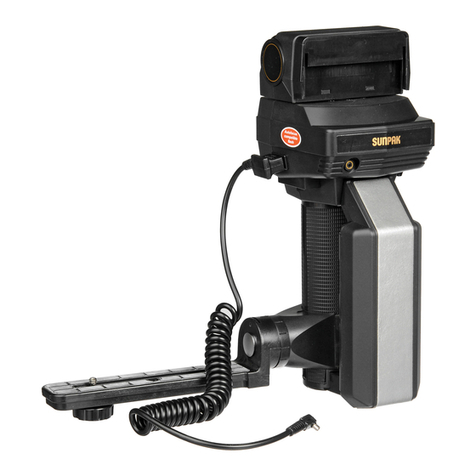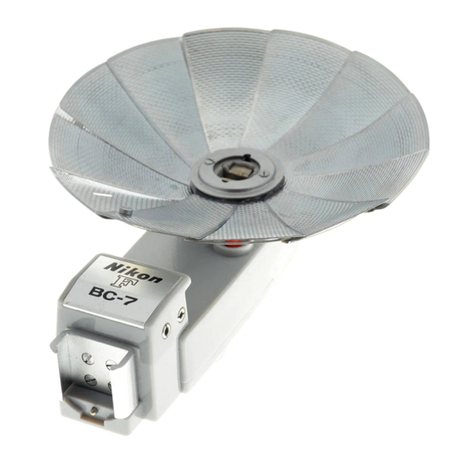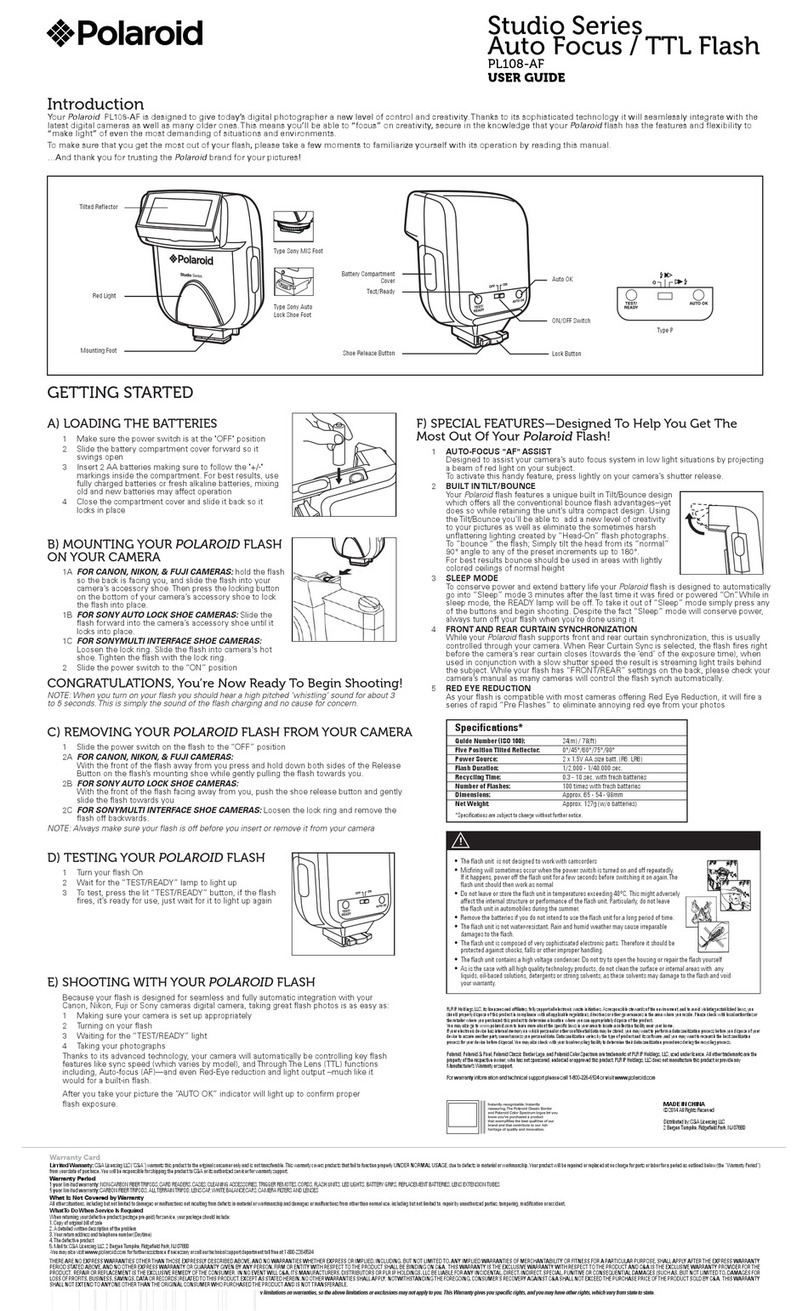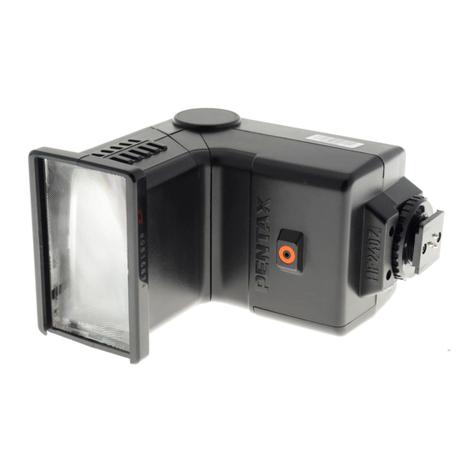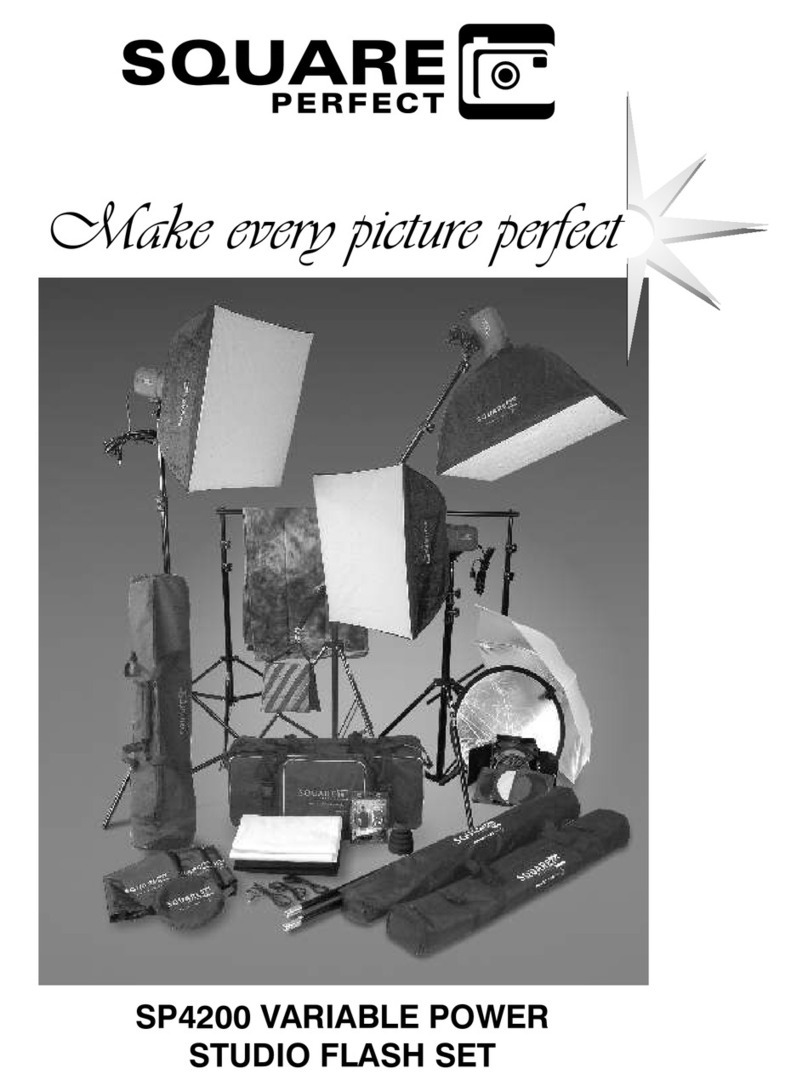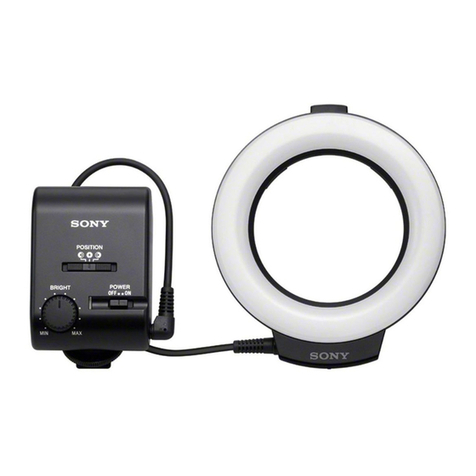c. The master ash’s ash-ready light will illuminate when
all ash units have recycled. You can enable C.Fn-20
on the master unit to also trigger an audible beep when
the slaves have recycled.
WIRELESS E-TTL WITH RATIO CONTROL
In this mode you can divide the slave units into different ring
groups (A:B or A:B C) and control the ash ratio (relative output)
between them. You can then adjust the overall brightness with
ash exposure compensation (FEC) on your camera, as neces-
sary. This mode is best for lighting setups where the ash-to-sub-
ject distance may change from one shot to the next and you wish
to maintain consistent output ratios between ash units.
1. Perform the initial ash setup described above. Conrm that
master and slave are set to the same transmission channel
and radio ID. Position the camera and ash within correct
operating range (30 meters/98 feet).
2. Set the ring group on each Speedlite 600EX-RT slave unit:
a. With Menu 1 displayed on a slave unit’s LCD panel,
press Fn. Button 3 on the master unit (under the “GR”
icon).
b. Set one unit to <A> and at least one slave unit to <B>
(do not set a slave unit to “D” or “E”, since it won’t re in
those settings).
3. Set the ratio on the master unit:
a. Press the master unit’s Fn Button 4 to display
<Menu 2>.
b. Press Fn Button 2 (under the “Ratio” icon), to toggle
between <ALL>, <A:B> or <A:B C>.
Note: A:B requires a minimum of two units. A:B C
requires a minimum of three. In either case, you can
adjust the power ratio only between groups A and B.
Group C is independent of A and B, and is best used
for background or accent lighting, rather than lighting
the main subject.
c. Press Fn Button 3 under the “GR” icon.
d. Press Fn Button 3 again to display <A:B ±>, and
highlight the ratio scale.
e. Turn the Select Dial to set the ash ratio, then press
the Select/Set Button.
f. Press Fn Button 4 to return to shoot-ready mode.
All ash ratios are expressed as A relative to B and as relative
amounts of exposure. For example, “1:1” means ring groups A
and B will produce equal output, “2:1” means A will produce
twice as much output (one stop more) than B, “1:2” means B will
produce twice as much output as A, and “8:1” means A will
produce eight times (3 stops) more output than B.
E-TTL GENERAL NOTES
1. Flash coverage is set to 24mm by default when the Speedlite
600EX-RT is set for wireless operation. You can manually
set the ash head to a more narrow angle of coverage if you
wish.
2. Press the depth-of-eld preview button on the camera if you
want to re the modeling ash.
3. If you’ve set Master Flash ON, the master unit is always part
of the A Group—no exceptions.
4. When set for radio-based wireless ash, the master ash unit
will enter sleep mode (auto power-off) after 5 minutes of inac-
tivity. Activative Speedlite 600EX-RT Custom Function 01-1 if
you wish to disable sleep mode on the master unit.
5. If a slave enters sleep mode, press the master unit’s test
ash button to turn the slave back on. Slave units, by default,
stay active for 60 minutes before auto power-off. You can use
Flash C.Fn 10-1 to change this to 10 minutes to conserve
slave unit battery power.
6. The following ash settings are available during radio-based
Wireless E-TTL (set on the master unit):
• Flash exposure compensation
• Flash exposure bracketing
• Flash exposure lock
• High-speed sync
• Manual ash
• Stroboscopic ash
WIRELESS MANUAL FLASH
In this mode you set each slave unit to a xed output and set the
camera exposure manually. You can set each unit to the same
or a different output. This mode is ideal for lighting setups where
the ash-to-subject distance is xed and you want your exposure
setting to be consistent from one shot to the next—for example,
when you are photographing subjects whose color and reectivity
are variable.
1. Perform the initial ash setup described above. Conrm that
master and slave are set to the same transmission channel
and radio ID. Position the camera and ash within correct
operating range (30 meters/98 feet).
2. Use the Mode button to set the ash mode to <M> on the
master unit.
3. Set the ring group ratio on the master unit. While <MENU
1> is displayed, press Fn Button 2 (under “Ratio” icon) to the
output ratio of your choice. Your options are:
a. ALL (NO RATIO — EQUAL OUTPUT)
b. A/B (RATIO A:B)
c. A/B/C (RATIO A:B:C)
All ratios are between ring group.
4. Set each slave unit to a particular Group. With Menu 1 on the
slave unit’s LCD panel, press Fn Button 3 (under “GR” icon)
and set each unit to “A”, “B” or “C”. (If set to “D” or “E”, they
won’t re in A:B or A:B:C ratio settings.)
5. Set the manual power level you want for each ash group.
On the master unit, press Fn Button 3 <GR>, turn the Select
Dial, and select the group for which you want to set the ash
output. Select A, B, or C.
6. Set the ash output. Press Fn Button 3 <* ±> again, turn the
Select Dial to set the ash output (from full 1/1 power thru
1/128th power), then press the Select/Set Button to register
your setting.
7. Repeat steps 5 and 6 to adjust ash power for
additional groups
NOTE: Slave units will initially read “E-TTL” in the upper-left corner
of their LCD panel. However, if you have set Manual (“M”) ash
mode on the master unit (Step 2 above), this master will automati-
cally communicate this mode to each connected slave unit when
you take your rst photo.
GR: DIFFERENT FLASH MODE FOR EACH GROUP
The mode is available only on EOS cameras released since 2012
(such as the EOS-1D X, EOS 5D Mark III, and EOS 6D). GR
mode is best suited to advanced photographers who have
experience in multiple ash lighting. You can set a different ash
mode for each ring group, up to a maximum of ve groups
(A/B/C/D/E). The available modes include:
• E-TTL
• Manual
• Auto external ash metering
1. Perform the initial ash setup described above.
2. Set the ash mode to <Gr> on the master unit.
3. Assign each slave unit to a ring group (A, B, C, D, or E).
4. Set the ash mode on the master unit for each ring group.
a. While <MENU 1> shows on the master unit’s LCD,
press Fn Button 3 <GR>, then turn the Select Dial to
a group.
b. Press Fn Button 2 <* MODE> repeatedly to toggle
through available ash modes — E-TTL, M, or ExtA.
c. Repeat step b on the master unit to set the ash mode
for each additional group.
5. Set the ash output or ash exposure compensation amount
on the master.
a. While a ring group is selected, press Fn Button
3 <* ±>
b. Turn the Select Dial to set the ash function that cor-
responds to the ash mode, then press the Select/Set
Button. For example, set the ash output for M mode,
or ash exposure compensation for E-TTL or Ext.A.
c. If you press Fn Button 2 <* ±> when <Menu 1> is on
the LCD, you can set ash exposure compensation for
all ring groups (E-TTL or Ext.A only).
d. Repeat steps a & b to set the ash power of any
remaining groups
e. Press Fn Button 4 to return to the shoot-ready state.
MEMORY FUNCTION
You can save one set of wireless settings to memory and
recall them later. This saves time during wireless setups. It’s
also a quick way to switch from standard ash-on-camera to
a commonly-used wireless set-up. The settings vary slightly
depending on whether you are setting a master or slave.
1. To access the Memory menu:
a. On the master unit: Press Fn Button 4 to display
<MENU 3>.
b. On the slave unit: Press Fn Button 4 to display <MENU
2>.
2. To save the settings to Memory:
a. Press Fn Button 3 <MEMORY>.
b. Press Fn Button 1 <SAVE>.
3. To access the settings from Memory:
a. Press Fn Button 2 <LOAD>.
4 5 6
